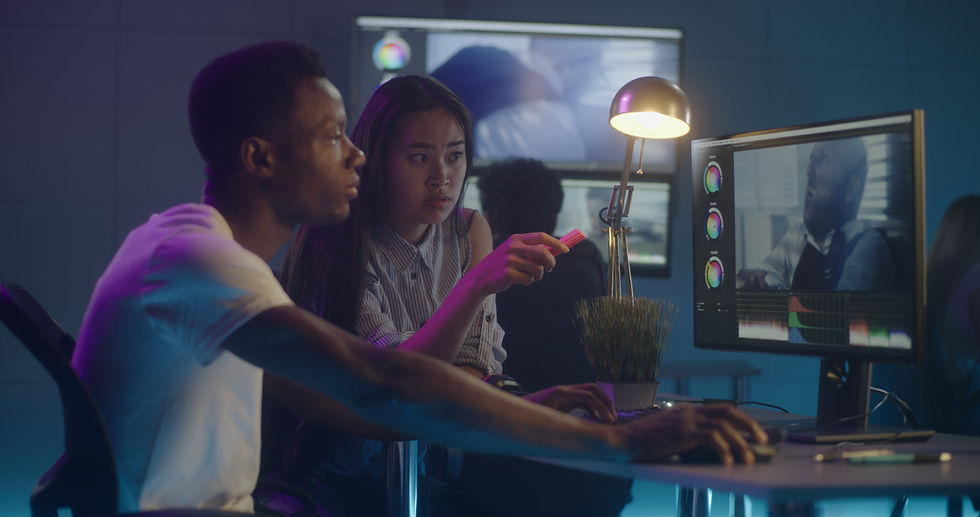The Fundamentals of Color Correction in Video Production
- Justin Bunnell

- Dec 11, 2023
- 3 min read

Introduction
Color correction and grading are essential skills in the world of video production, serving as the backbone of visual storytelling. This guide offers a fundamental overview of these crucial aspects, laying the groundwork for those beginning their journey in mastering the art of color in film and video. While color theory, technical tools, and creative techniques might initially seem daunting, understanding their basics is a vital first step. This overview delves into the core principles and practices, from the emotional impact of colors to the technicalities of waveforms and scopes, providing a foundational understanding that will prepare you for more advanced exploration and application in the diverse and nuanced field of color correction and grading. Whether you're an aspiring filmmaker or a seasoned professional, grasping these fundamentals is key to elevating your craft and bringing your visual narratives to life.

1. Color Theory in Video Production
Warm and Cool Colors: Warm colors, like red and orange, can create a feeling of warmth and excitement. For example, they are often used in scenes depicting sunsets or cozy interiors. In contrast, cool colors like blue and green typically convey calmness and serenity, often used in night scenes or to create a cold, detached mood.
Color Harmony: Using complementary colors (like blue and orange) can create a vibrant look if you want your video to stand out. Analogous colors (like green and yellow) provide a more harmonious and cohesive look, suitable for tranquil or natural settings.
2. Emotional Impact and Symbolism
Cultural Contexts: Colors carry different meanings in various cultures. For instance, white is often associated with purity in Western cultures, while it can represent mourning in some Eastern cultures. Understanding these contexts is crucial for global audiences.
Color in Genres: In horror films, red might be used to denote danger or blood, whereas in romance, it could symbolize love and passion. Similarly, a desaturated color palette is common in post-apocalyptic films to convey bleakness and desolation.

3. Technical Aspects of Color Correction
Waveforms and Scopes: Waveform monitors display the brightness levels of your footage and are crucial for ensuring proper exposure. They graph the luminance of each pixel along the horizontal axis of your image. For example, if the waveform is heavily bunched at the top, your footage might be overexposed.
Contrast Ratios: Contrast is measured by the ratio of the brightness of the brightest white to the darkest black. A higher contrast ratio results in a more dynamic and vivid image. For instance, a noir film might have a high contrast to emphasize shadows and highlights.
4. Color Grading Techniques
Teal and Orange Look: This popular cinematic color grading technique involves pushing blues into the shadows and oranges into the highlights. It's commonly seen in action movies and helps skin tones stand out against cooler backgrounds.
Color Grading for Time of Day: Color grading can simulate different times of day. For example, a morning scene might be graded with soft, golden hues, whereas a night scene could be graded with cooler, bluer tones.

5. Best Practices in Color Correction and Grading
Natural Skin Tones: Ensuring natural skin tones is paramount. This often involves isolating skin tones using secondary color correction tools and adjusting them separately from the rest of the image.
Reference Monitors: Using a properly calibrated reference monitor ensures that the colors and brightness levels you see are accurate and will translate well across various viewing platforms.
Conclusion
Effective color correction and grading balance technical proficiency with creative expression. By utilizing these principles and tools, you can enhance the narrative and emotional depth of your video content, ensuring a compelling and visually striking result. Remember, the overarching goal is to support and elevate the story you're telling through the subtle yet powerful language of color.


Comments